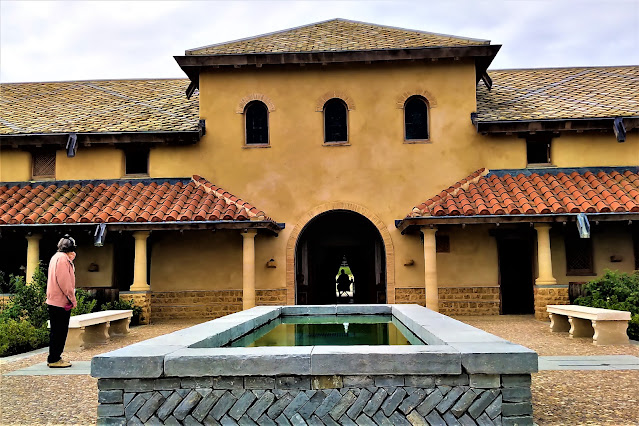Scottish Maritime Museum
Introduction
This post is a continuum of that of yesterday. Previous post focused on the glory days of yachting on the Clyde whilst today I am reporting on a wide range of vessels on display at the Scottish Maritime Museum in Irvine on the Clyde Coast, West of Scotland.
Information of the Various Vessels.
In the 19th and 20th centuries shipyards on the Clyde produced a wide range of vessels including passenger liners, cruise ships and large commercial vessels. The vessels on display at the museum sit at the smaller and historic end of the market.
MV Spartan. This is a steam powered 'puffer' built in 1942 for use on the Clyde and Forth Canal.
SY Carola.This is a steam yacht built in 1898.It was used for both leisure and commercial purposes.
This is the Olympus engine which powered Vulcan bombers, Concorde and was adapted for marine use.
Model of PS Waverley. This paddle steamer was built on the Clyde in 1946 and is still in use today (for leisure cruises).
This is a model of the Finnieston Crane which was built in 1931 to lift and load large locomotives on to ships for export. The crane still exists in situ.
This is a Lego model of the Titanic. It was assembled by 13 children in course of 1 , 1 hour sessions.This vessel was built at Belfast in Northern Ireland.
This boat has a lineage stretching back to Viking times of the late 1st millennium. It was built on the island of Foula in 1898 and is known as a Shetland Fourareen. Construction is entirely of driftwood as there are no trees on Shetland.
This kayak was built for the Scottish Kayak Expedition, North West Norway, 1980.
Ship figureheads. These could be used for scaring off evil spirits or as lucky mascots. Figureheads were once considered essential to a ship's fate at sea.
This sailing galley was commissioned by the Marquess of Bute in 1819. It was fitted with 12 oars.
This is all that remains of the SS Rifle, one of the earliest surviving examples of a small pre-fabricated screw steamer in the British Isles. It was used for ferrying people and goods around the isolated dwellings on Loch Arkaig.
This is Seamew, a motor launch which, despite modest appearance, could be described as something of a showboat.
Historic lifeboat 'T.G.B.' Currently undergoing maintenance and upkeep.
These items relate to the famous sinking of the SS Politician in 1941.At the time it's cargo included 264,000 bottles of whisky. The sinking event was made into a film titled 'Whisky Galore'.
The bottle of whisky was salvaged from the wreck whilst the diving helmet was used in the 1967 recovery.
This is a jolly boat named Mary Chalmers.It was used in competitions when teams from various marine trades competed on the Clyde.
This model is of a military ship of the Dreadnought class. It was introduced in 1906 following which all previous warships were effectively obsolete.
This is the Gleniffer engine renowned for it's strength, simplicity and reliability. It was known as the 'fisherman's friend.' It was first used in 1906.
This is a Zulu class vessel of a type which dominated Scotland's east-coast fishing fleet. This design dates from 1879.
More Information
For more information on Scotland’s industrial history, it’s cities and much more please refer to the Visitors’ Guide to Scotland, ISBN 978-1-9161332-0-4. This book is also available via Kindle.



















Comments
Post a Comment